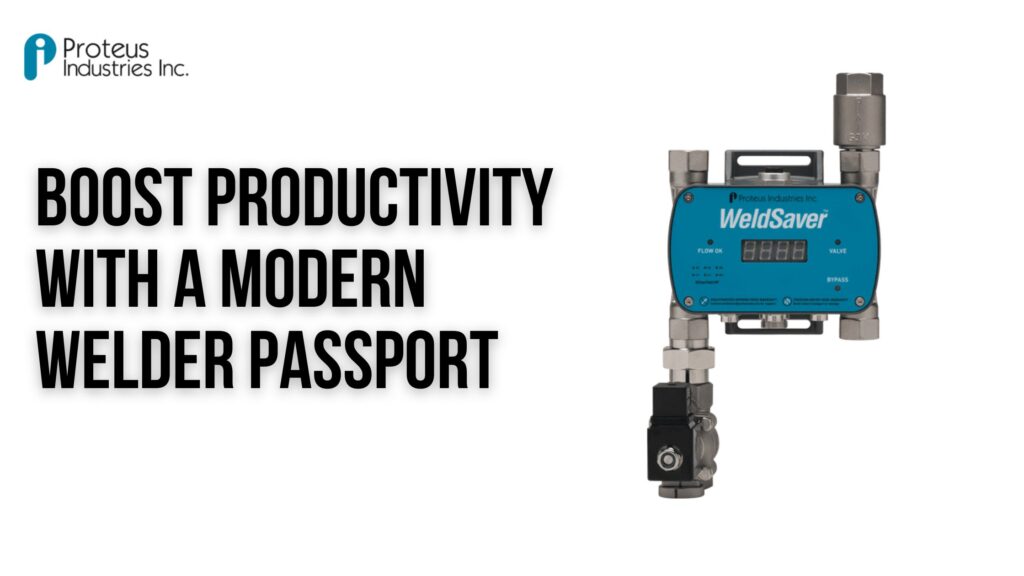In today’s fast-paced manufacturing environments, productivity, precision, and reliability are more critical than ever. Automated welding systems must not only be efficient but also adaptable and easy to monitor. The passport welder system is a modern solution that meets these demands. It enables users to manage and replicate welding processes with ease, improving consistency, safety, and throughput.
One of the most advanced tools in this category is the WeldSaver™ 5 Passport, a system designed to simplify setup, increase accuracy, and safeguard equipment. In this guide, we’ll explore how this technology boosts operational efficiency, supports better maintenance, and ensures precise coolant flow control—all essential elements in high-performance welding systems.
What Is a Passport Welder?
A passport welder is a system that stores and transfers essential configuration data across welding workstations. It acts like a digital passport, carrying welding parameters, process settings, and diagnostics between different machines or production lines.
This concept minimizes manual setup time, eliminates inconsistencies, and enhances process repeatability. Instead of re-entering data for every new setup, the passport welder allows operators to load pre-configured settings instantly, ensuring faster transitions and minimal errors.
The Role of WeldSaver™ 5 Passport in Modern Welding
The WeldSaver™ 5 Passport is a specialized welding monitoring and coolant control system designed for robotic and automated welding operations. It combines critical features like flow monitoring, leak detection, over-temperature protection, and auto-shutdown capability—all within a compact and intelligent interface.
By integrating the passport concept, the WeldSaver™ 5 Passport stores user profiles and application data, which can be transported and used across other WeldSaver-enabled stations. This creates a seamless experience for weld engineers and production technicians.
Key Features of the WeldSaver™ 5 Passport
1. Quick Setup with Stored Configuration Profiles
One of the standout features of this passport welder system is its ability to store and recall multiple configuration profiles. These digital profiles carry detailed parameter settings such as flow rates, temperature thresholds, and shutdown limits. Users can apply an entire setup without reprogramming the device manually.
This feature reduces setup time dramatically—especially in production environments where speed and repeatability are critical.
2. Advanced Leak Detection and Shutoff
The WeldSaver™ 5 Passport includes a fast-acting leak detection system that monitors coolant flow and pressure in real time. In case of sudden changes, the unit can trigger an automatic valve shutdown within milliseconds. This not only protects equipment from damage but also ensures safety for operators and nearby systems.
By identifying coolant failures early, the passport welder setup prevents unplanned downtime and costly maintenance repairs.
3. Precision Coolant Flow Monitoring
Accurate coolant flow is essential in robotic welding applications to maintain optimal operating temperatures and extend equipment life. The WeldSaver™ 5 Passport uses high-precision sensors to measure flow, temperature, and pressure, ensuring that each component operates within safe limits.
Real-time flow data is displayed on a user-friendly interface, allowing operators to monitor conditions without complex tools or training.
4. Ethernet/IP and PROFINET Compatibility
Modern factories rely heavily on automation networks. The WeldSaver™ 5 Passport supports Ethernet/IP and PROFINET communication protocols, making it easy to integrate with existing PLCs, robots, and production control systems.
This connectivity allows for better data exchange, remote monitoring, and integration into Industry 4.0 environments—an important consideration in any modern passport welder application.
5. Compact and Durable Design
With a compact form factor and industrial-grade construction, the WeldSaver™ 5 Passport fits seamlessly into various welding setups. Its rugged design ensures long-lasting performance is demanding environments, reduce the need for frequent replacements or recalibration.
How the Passport Welder Enhances Productivity
The true power of a passport welder system like WeldSaver™ 5 Passport lies in its ability to streamline operations and minimize errors. Here’s how it enhances productivity:
Faster Changeovers
Stored configuration profiles mean operators can switch jobs or move to different stations quickly. This agility is essential in high-mix, low-volume production environments where flexibility is key.
Improved Equipment Uptime
Automatic leak detection and immediate shutdown capabilities prevent equipment from running under unsafe conditions. This proactive approach protects welding tools, reduces wear and tear, and minimizes production stoppages.
Reliable Data Logging
The system records operating data and event history, making it easier for engineers to troubleshoot, optimize settings, and comply with quality standards. This built-in recordkeeping is especially useful in regulated industries like automotive and aerospace.
Applications of the WeldSaver™ 5 Passport
The WeldSaver™ 5 Passport system is ideal for any robotic welding application where coolant control and process monitoring are essential. Typical use cases include:
- Automotive welding cells
- Battery manufacturing systems
- Automated tooling setups
- Robotic spot welding operations
- Custom automation lines
Thanks to its modular design and communication flexibility, the WeldSaver™ 5 Passport adapts well to various industries that prioritize accuracy and repeatability.
Why Choose a Passport Welder Over Traditional Systems?
Traditional coolant control systems require manual configuration and lack automated safety features. The passport welder approach replaces guesswork with precision and manual tuning with data-driven automation.
Here’s why the passport model is superior:
- Reduced human error through preloaded profiles
- Increased efficiency with plug-and-play setup
- Better asset protection from smart monitoring and shutoff
- Higher quality control using real-time data feedback
- Improved traceability with stored usage logs and alerts
As manufacturing becomes more digital and data-focused, the passport welder method provides the tools to stay competitive and efficient.
Maintaining a Passport Welder System
To ensure consistent performance, it’s important to perform routine maintenance and calibration checks on the WeldSaver™ 5 Passport. Follow these best practices:
- Inspect connections and hoses regularly for signs of wear
- Monitor flow and pressure trends for any sudden changes
- Update configuration profiles as needed for new applications
- Clean sensors and filters to maintain optimal measurement accuracy
- Backup settings and data logs to preserve operational records
Scheduled maintenance combined with the system’s built-in diagnostics helps extend service life and keep productivity high.
Conclusion: Modern Welding Demands Smart Solutions
Welding automation continues to evolve, and with it, the need for smarter, faster, and more reliable systems. The welder passport approach—exemplified by the WeldSaver™ 5 Passport—offers a future-ready solution for manufacturers who want to improve efficiency, reduce downtime, and safeguard their operations.
With advanced features like flow monitoring, leak detection, data logging, and stored profiles, this technology brings clarity and control to complex welding environments. For teams looking to stay ahead in automated production, a passport welder system is not just an upgrade—it’s a necessity.
Proteus Industries Inc. continues to lead the way by delivering cutting-edge tools like the WeldSaver™ 5 Passport, helping industries around the world achieve safer and more productive welding operations.
Let me know if you’d like a shorter summary, product flyer version, or LinkedIn post adaptation of this content!


